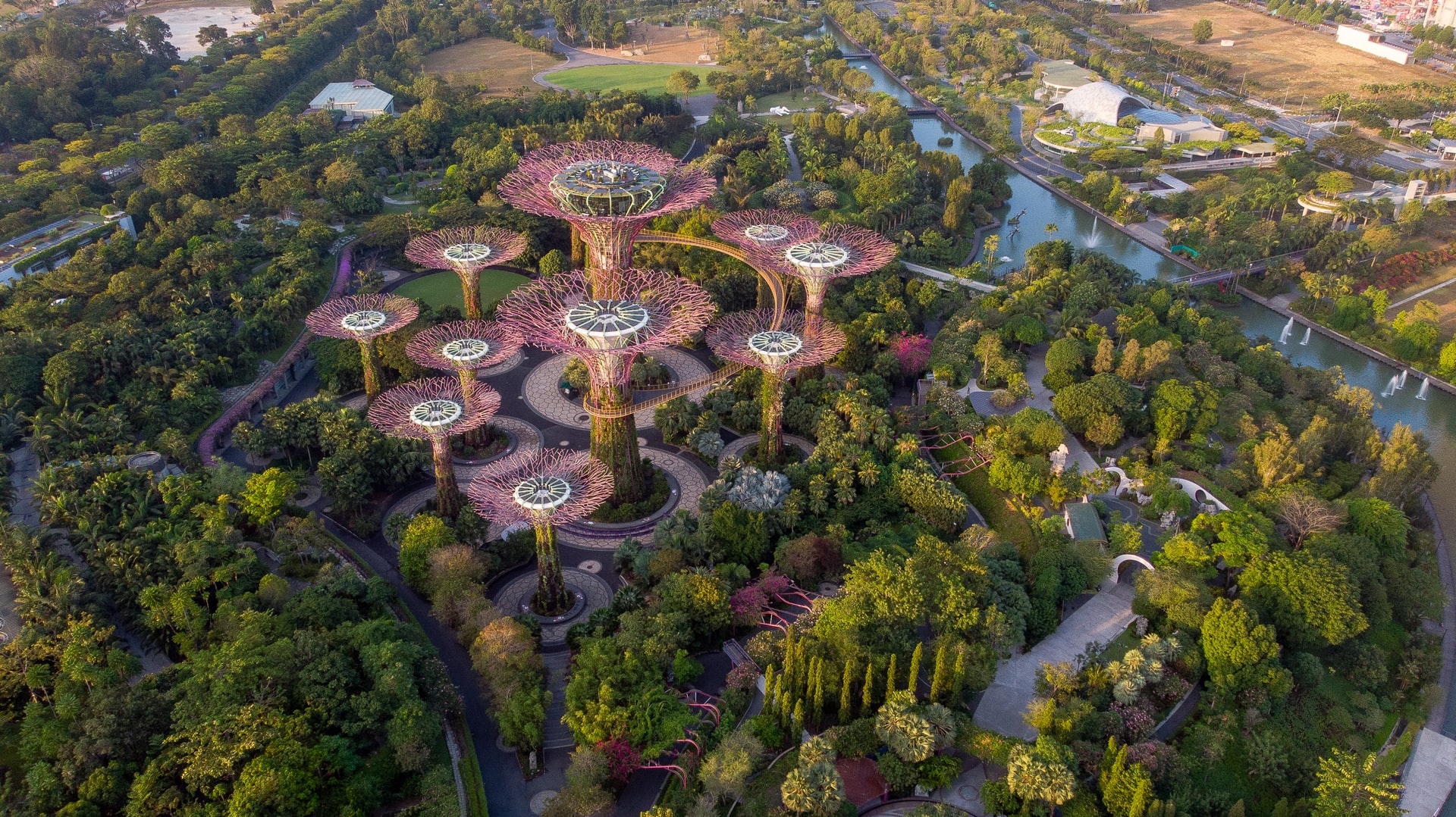Singapore Smart City to Reduce Carbon Footprint

While the hustle and bustle of city life is alluring, dense populations and excessive pollution can make urban spaces some of the least environmentally friendly destinations. Enter smart cities, urban areas that utilize advanced technology to enhance the lives of citizens and reduce carbon emissions. Predicted to be up and running by 2023, Singapore’s innovative smart city, Tengah, is definitely a step in the right direction.
Despite its small population of 6 million, Singapore contributes around 0.11 percent of global emissions with per capita emissions greater than the UK, China and Malaysia. The majority of these emissions are due to the combustion of fossil fuels, which drives nearly 95 percent of Singapore’s electricity.

Announced in 2016, the concept of Tengah was sparked by planners’ desire to bring humans and nature together by promoting behaviors that would reduce emissions. Over 80% of the country’s population resides in public housing, and Tengah will have the capacity to house over 42,000 people. The city’s innovative advancements are expected to improve residents’ well being, all while reducing the country’s carbon footprint.
Embracing A Natural Landscape
Officials are referring to the Tengah development as a “forest town” due to its vast greenery and abundance of natural landscapes. The center of the city will be home to an “ecological corridor,” connecting a source of water to the surrounding wildlife.
Tengah will have Singapore’s first “car-free” city center, encouraging walking and bicycling as primary modes of transportation. The layout will be accessible and convenient, the majority of residents living within walking distance of an Mass Rapid Transit (MRT) station. Roads for vehicles will run beneath the town center, separating pedestrians from motor traffic and giving citizens a safer and less polluted place for recreation. There will also be electric vehicle charging stations located throughout the city to promote energy efficient travel.

In addition to lessening car pollution, this layout will also improve mental health among citizens, and inspire more close knit communities. Exposure to greenery has been correlated with reduced stress and increased happiness. Singaporeans will have the opportunity to connect with and value nature, and have increased interaction with neighbors.
Centralized Cooling Systems
Air conditioning makes up over one third of a household’s typical air consumption, and is essential given Singapore’s warm climate. As global warming becomes more pressing, average temperatures will likely increase, making this problem even more prevalent.
Acknowledging the need to keep cool, Tengah’s developers plan to trade out environmentally unfriendly air conditioners for solar power-cooled water systems. Centralized cooling systems will be placed at various locations, and will be far more energy efficient than individual home units. Other countries can learn from Tengah’s strategies, potentially adopting more centralized and community based modes of energy distribution.
Smart Lights & Waste Removal
Planners are installing “smart lights” throughout the city to preserve electricity and limit energy usage. Located in public areas, these lights will automatically turn on and off depending on how populated a given precinct is at a certain time.
Trash will be disposed of via a Pneumatic Waste Conveyance System (PWCS), The PWCS will use high speed air to collect waste, creating a cleaner and more hygienic environment for citizens while lessening the reliance on garbage trucks.
Mobile App
A mobile app will be available for Tengah’s citizens to track, report and monitor their household’s energy and water usage. Educating people on the break-down of their energy consumption will likely promote major lifestyle changes, in addition to lowering utility costs for individuals.

Planners believe that being able to view other neighboring blocks’ usage could even stimulate healthy competition, encouraging community members to have lower carbon footprints than their neighbors.
While Tengah is newly developing with little tangible data, its environmentally friendly design will hopefully encourage other countries to make similar sustainable changes. Contacting government officials and signing petitions can be a great way to advocate for your own city to take these eco friendly measures. Similarly, volunteering to help clean up your community could also entice your neighbors to spend time outdoors. But there are still ways to take action on a smaller scale.
It is helpful to become cognizant of your own habits as an individual. Switching off lights when not in use, turning off faucets, and opting to walk instead of drive are easy ways to reduce your own carbon footprint. Making these changes, whether it be on a personal or a broader scale, can help your environment all while improving your own wellbeing.


Leave a Reply